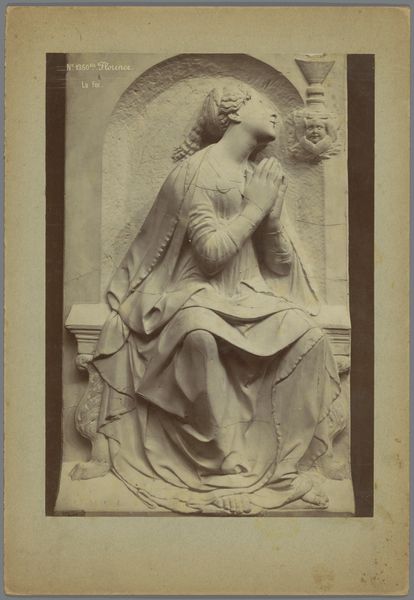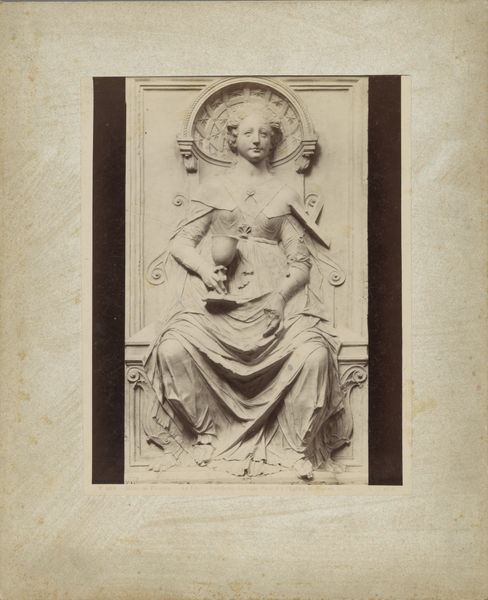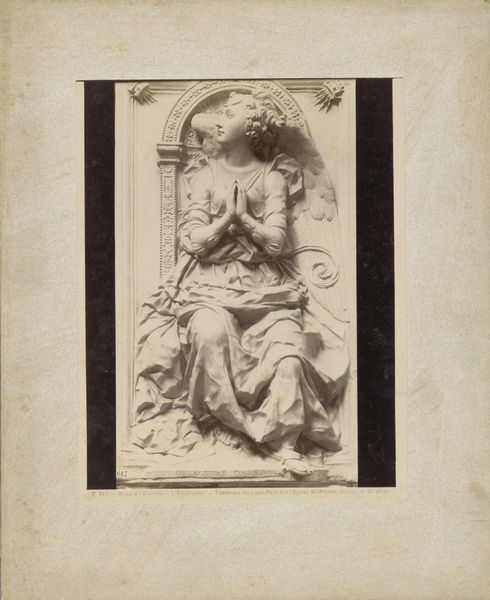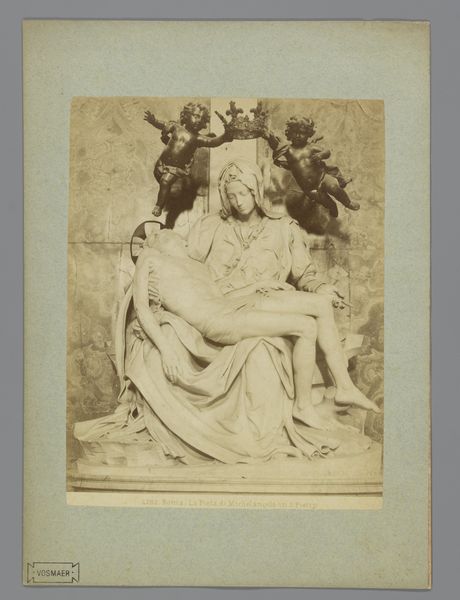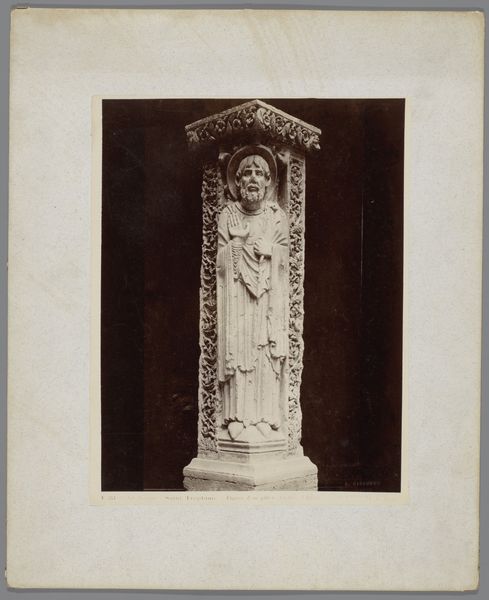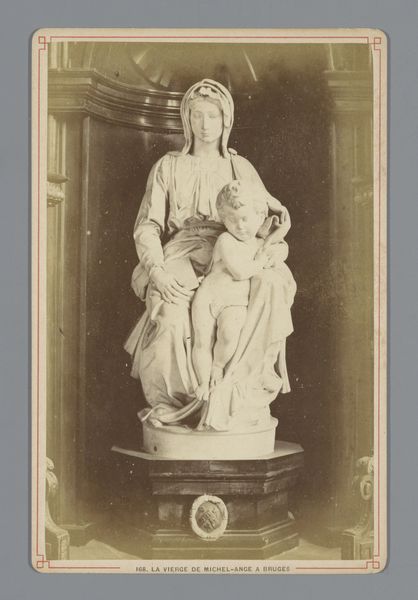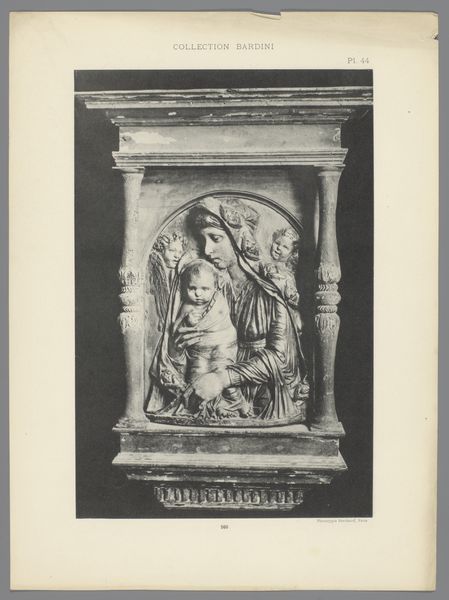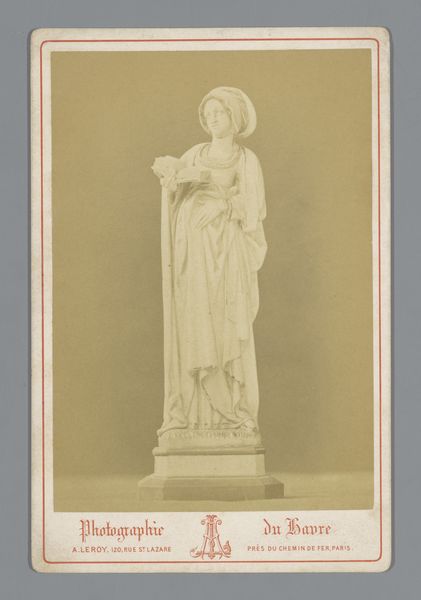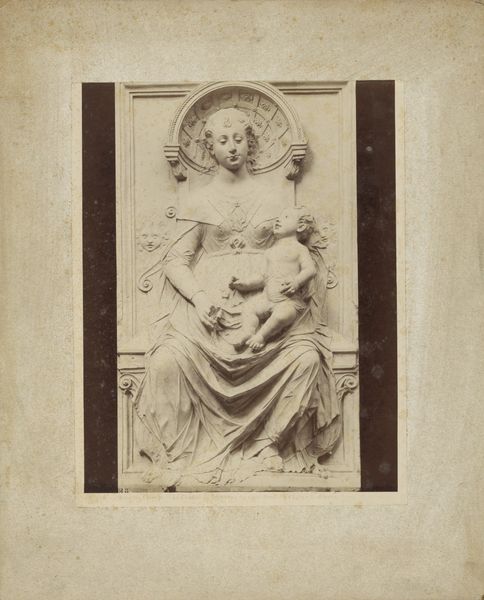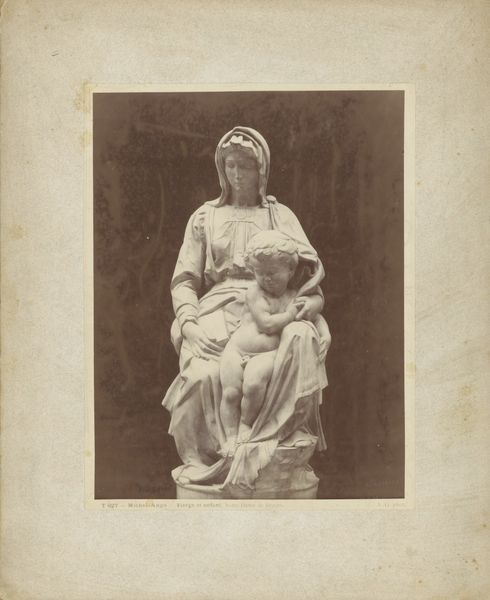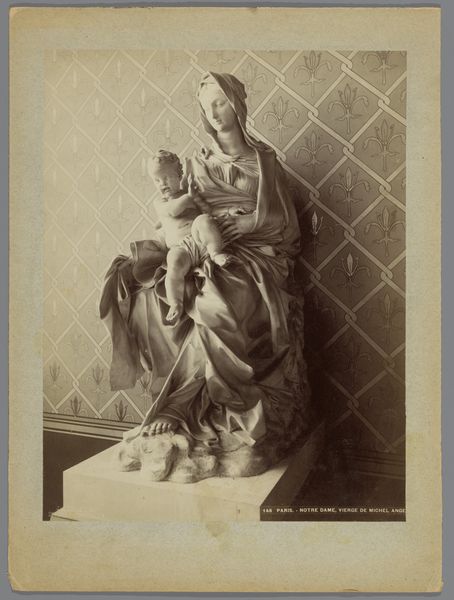
Gipsafgietsel van een reliëf van een biddende engel in het Musée des monuments français te Parijs c. 1875 - 1900
0:00
0:00
medericmieusement
Rijksmuseum
Dimensions: height 355 mm, width 249 mm
Copyright: Rijks Museum: Open Domain
Curator: Before us is a gelatin silver print from somewhere between 1875 and 1900, attributed to Médéric Mieusement. It captures a plaster cast of a relief sculpture, specifically a praying angel from the Musée des Monuments Français in Paris. What’s your immediate response? Editor: It strikes me as quite serene, almost melancholic. The softness of the light, combined with the muted tones of the print, lend a dreamlike quality to the figure. The lines of the drapery and the delicate details of the angel’s face are quite compelling, formally speaking. Curator: It’s interesting you mention serenity. Consider the context of the Musée des Monuments Français: it was conceived as a way to preserve French artistic heritage after the Revolution, often housing casts like this one precisely to protect originals from potential iconoclasm. The act of photographing a reproduction speaks to a larger cultural anxiety about loss and preservation. Editor: I see your point. But looking solely at the composition, observe how the angel's upward gaze draws the eye, creating a vertical emphasis. The artist brilliantly uses light and shadow to give depth to the otherwise flat plane, guiding the viewer's attention across the subtle curves of the composition. Note the gentle contrast in the wings, in comparison to the darker corners behind them that offset the image plane. Curator: Indeed, Mieusement's work here sits at an intersection of art and documentation. The photograph exists not just as an aesthetic object, but also as a historical record, illustrating how cultural institutions grapple with the legacies of monumental art, and their responsibilities towards that heritage. The photograph provides a record but also a way of engaging, via consumption and viewership, to disseminate the meaning behind such iconic structures as symbols of religious and state power. Editor: Agreed, however the formalism also lends itself to symbolism that can then be translated back to historical importance; from my perspective, there’s no reading into social history without the clues given through the image, for example. What do you find most striking in considering both aspects? Curator: Reflecting on it, it's the layered mediation involved in encountering this artwork. We're not viewing the original sculpture, but a photograph of a plaster cast, each step removed adding another layer of interpretation and meaning. Editor: And for me, it's the elegance with which the formal elements harmonize, inviting us into a quiet space of contemplation, regardless of the art object's layered historicity.
Comments
No comments
Be the first to comment and join the conversation on the ultimate creative platform.
